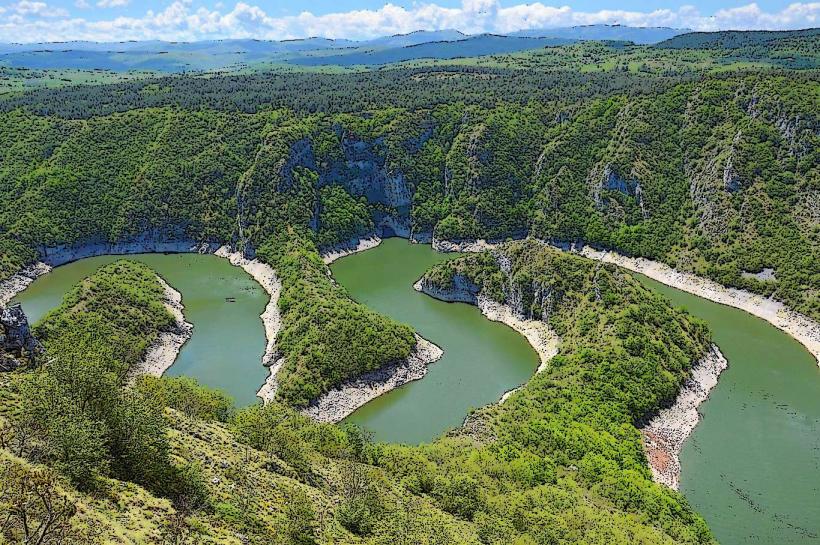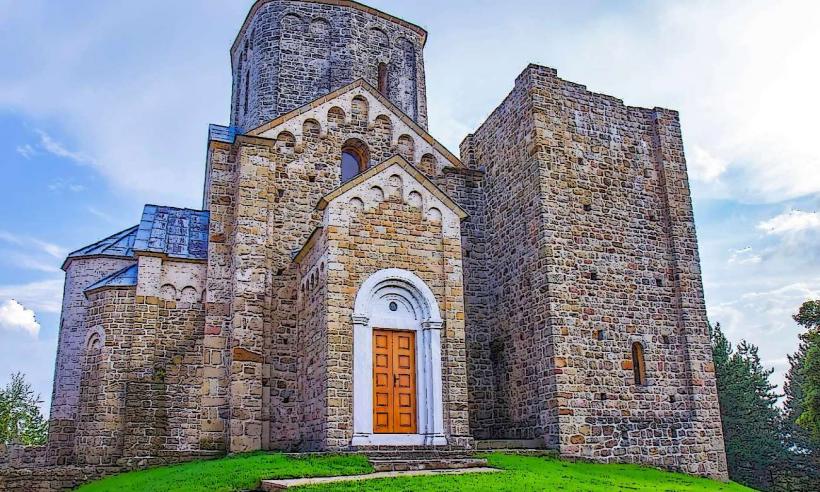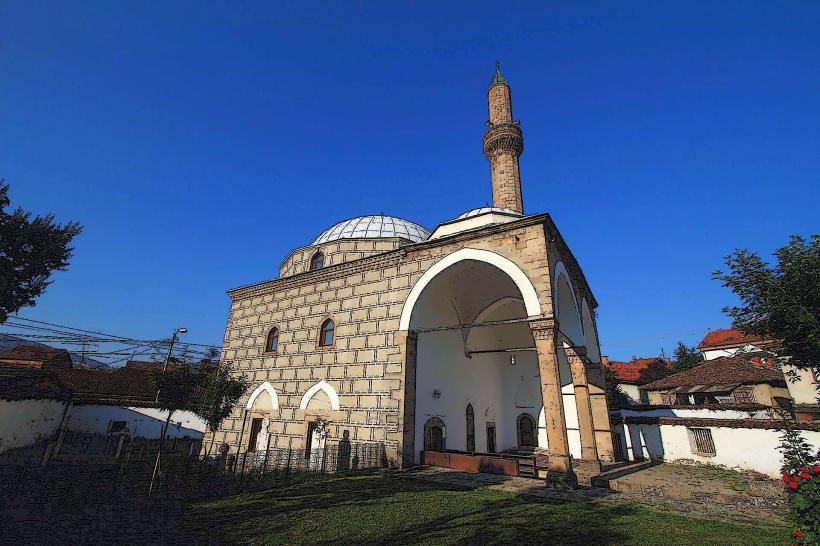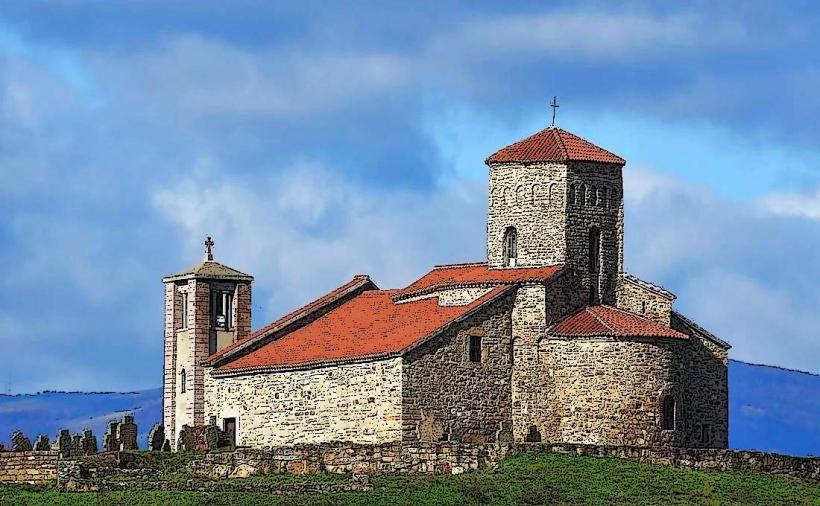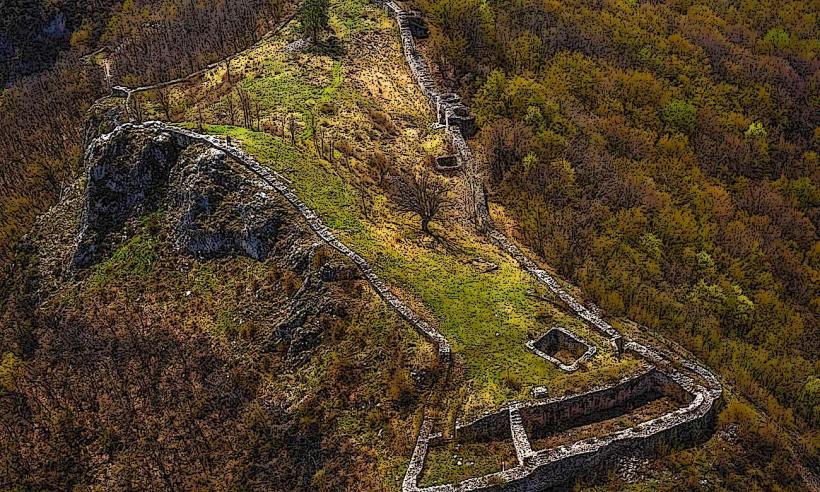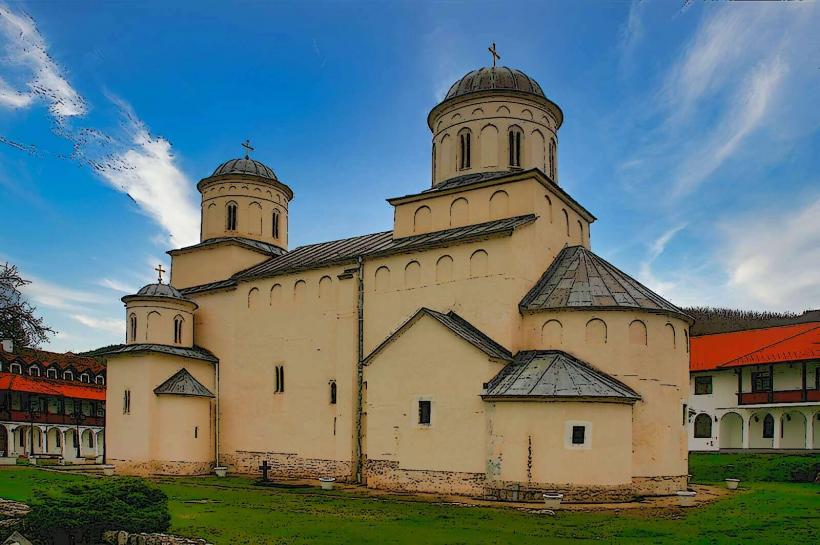Information
Landmark: Sopoćani MonasteryCity: Novi Pazar
Country: Serbia
Continent: Europe
Sopoćani Monastery is one of the most important and significant Serbian Orthodox monasteries, located near Novi Pazar in the Rashka region of southern Serbia. It is renowned for its historical importance, architectural beauty, and the exceptional frescoes that decorate its church. The monastery is dedicated to the Holy Trinity and has been recognized as a UNESCO World Heritage site, making it one of the most revered landmarks in Serbia.
Historical Background
Foundation:
- Sopoćani Monastery was founded in the 13th century, around 1259, by King Uroš I of the Nemanjić dynasty. It was built as a royal mausoleum for King Uroš I, and it served as an important spiritual center during the time of the Serbian medieval state.
- The monastery was constructed in the period when the Nemanjić dynasty was at its height, particularly after the ascension of Stefan Nemanjić and his descendants, who played a significant role in establishing Serbia’s Orthodox Christian identity.
Historical Significance:
- Sopoćani holds great significance in both religious and historical terms, as it was a symbol of the Serbian medieval state and served as a place of spiritual importance during the reign of the Nemanjić kings. The monastery is closely linked to the development of the Serbian Orthodox Church, and its importance grew in the years following its construction.
- It also became an important cultural center, where the art of iconography and fresco painting flourished, contributing to the development of medieval Serbian art.
Decline and Restoration:
- Like many other monasteries in Serbia, Sopoćani suffered during the Ottoman occupation of the Balkans, when many religious and cultural landmarks faced destruction or neglect. However, the monastery has been subject to various restoration efforts in recent centuries, and it remains an active and influential religious site today.
- The UNESCO World Heritage status was granted to Sopoćani Monastery in 1979, recognizing its cultural, historical, and artistic value.
Architectural Features
Church of the Holy Trinity:
- The centerpiece of Sopoćani Monastery is the Church of the Holy Trinity, which is an example of Rascia-style architecture, a style that developed during the Nemanjić dynasty in the 12th and 13th centuries. The church is rectangular in shape and features a central dome and semi-circular apses at the east end, reflecting the Byzantine influence that was prevalent in Serbian medieval architecture.
- The church is built with stone and features a simple, yet imposing, design. The church's interior is renowned for its stunning frescoes, which are considered some of the most important works of medieval Byzantine art.
Frescoes and Iconography:
- The monastery is particularly famous for its frescoes, which are among the finest examples of Serbian medieval art. The frescoes were painted in the 13th century and are attributed to a group of artists who were trained in the Byzantine tradition.
- The frescoes in the church of Sopoćani depict scenes from the life of Christ, as well as biblical stories and saints. The Last Judgment fresco in the apse of the church is one of the most remarkable and significant in the monastery, representing a vivid depiction of the Judgment Day with a powerful message about eternal life and the fate of souls.
- The frescoes at Sopoćani are also important for their vivid color and intricate detail, which were accomplished using the technique of fresco painting, where pigments are applied to wet plaster to ensure that the colors become an integral part of the wall surface.
- The frescoes at Sopoćani influenced the development of Serbian and Balkan art for centuries, and they remain a major attraction for art historians and visitors to the monastery.
Monastic Complex:
- The monastic complex at Sopoćani includes the church, monastic cells, a cloister, and grounds. The monks who resided at the monastery dedicated their lives to religious practices, including prayer, meditation, and copying religious manuscripts.
- Over the centuries, the complex has undergone various renovations and repairs, but its medieval character has been preserved.
Religious and Spiritual Significance
Spiritual Role:
- The Sopoćani Monastery remains an active center for Orthodox Christian worship. It continues to serve as a place of prayer, pilgrimage, and monastic life for the Serbian Orthodox Church.
- The monastery is dedicated to the Holy Trinity and is associated with the Nemanjić dynasty, marking it as an important site for Serbian Orthodox Christians who wish to honor their faith and connect with their historical and cultural roots.
Monastic Life:
- The monastery was historically a center of monastic life, where monks lived according to the ancient monastic rule, dedicating themselves to a life of prayer and asceticism. While the monastic community today is small, it still holds regular services and offers a place for spiritual retreat.
- The monastery also remains an important center for the preservation of Orthodox Christian traditions, including religious festivals and the making of icons.
Pilgrimage Site:
- Sopoćani is a place of pilgrimage for many Serbian Orthodox Christians, especially on special religious holidays. The feast day of the Holy Trinity, celebrated on Pentecost, is a particularly important event at the monastery, attracting pilgrims from across Serbia and beyond.
- The frescoes, which depict scenes of saints and biblical stories, add to the monastery’s significance as a spiritual destination for visitors seeking to deepen their faith.
Tourism and Visitor Experience
Attraction for Visitors:
- Sopoćani Monastery is a significant tourist destination, particularly for those interested in medieval Serbian history, Byzantine art, and Orthodox Christian heritage. Visitors come to admire the monastery's architecture, frescoes, and peaceful environment.
- The monastery's location in the Rashka region, near Novi Pazar, makes it accessible to travelers interested in exploring the rich cultural and historical landscapes of southern Serbia.
Cultural and Educational Value:
- Sopoćani Monastery offers visitors the opportunity to learn about Serbian medieval art, the Nemanjić dynasty, and the development of Orthodox Christian monasticism. The frescoes are a focal point of interest for art historians, who admire their stylistic and technical brilliance.
- The monastery also provides an educational experience for those interested in the **history of the Serbian Orthodox Church and its role in shaping the cultural identity of the region.
Natural Beauty:
- The monastery is set in a peaceful natural setting, surrounded by forests and rolling hills. The tranquil atmosphere provides visitors with an opportunity to reflect, meditate, and connect with the monastery's spiritual heritage while enjoying the beauty of the surrounding landscape.
Conclusion
Sopoćani Monastery is an exceptional landmark in Serbia, not only for its historical significance but also for its role in preserving the Serbian Orthodox faith and its contribution to medieval art. The frescoes and architectural beauty of the monastery make it a must-visit destination for those interested in religious history, Byzantine art, and Serbian culture. As an active monastic community and UNESCO World Heritage site, Sopoćani remains a living testament to the importance of the Orthodox Christian tradition in the region and continues to be a place of reflection, prayer, and spiritual renewal.

